Kansai Tourism offers a captivating blend of ancient traditions and modern marvels, making it a must-visit destination for travelers seeking authentic Japanese experiences. SIXT.VN can help you plan your perfect Kansai adventure, from convenient transportation to curated tours. Explore the region’s rich culture, stunning landscapes, and delicious cuisine with ease.
1. Exploring Mie Prefecture: Authentic Experiences with Ama Divers
Want a unique cultural experience? Mie Prefecture, stretching along the southeastern coast of Kansai, offers an unforgettable encounter with the ama divers, the “women of the sea.”
1.1 The Legacy of Ama Divers
Once a common sight across Japan, ama divers are now a rare treasure, with Mie Prefecture boasting the largest number of active divers. As of 2023, Mie is home to 514 of the 1,220 divers found across the country. These remarkable women free-dive to the ocean floor, using only their bodies and simple tools to harvest seafood, most notably the prized abalone. Preserving ocean resources is a priority, and the ama are careful to only harvest what they need.
1.2 Immersive Dining Experience
Visitors have the incredible opportunity to dine with the ama divers at Satoumian’s ama hut experience. Gather in a replica of an original ama hut and listen to captivating tales from the divers themselves. According to a study by the Mie Prefectural Government in 2020, cultural tourism experiences like dining with ama divers provides a unique cultural immersion, boosting local economies.
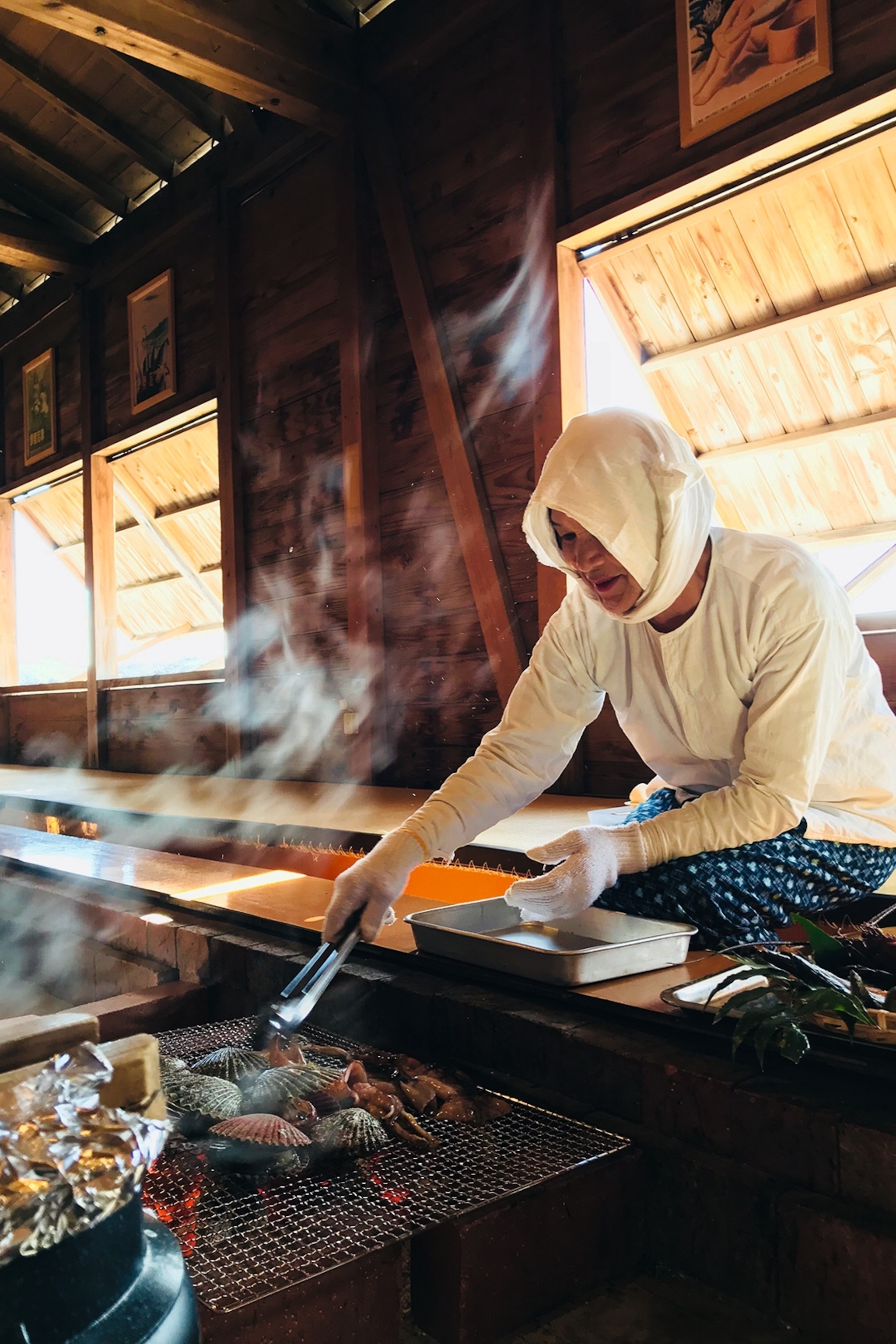 Dining with Ama Divers
Dining with Ama Divers
2. Discovering Osaka Prefecture: Finding Serenity at Katsuoji Temple
Escape the bustling metropolis and discover tranquility at Katsuoji Temple. Just 15 miles from Osaka, this temple offers serene forests and stunning seasonal views.
2.1 A Temple of Victorious Luck
Founded in 727 CE, Katsuoji Temple is associated with “victor’s luck.” Legend says that a sick emperor prayed here and was miraculously healed, leading him to name the temple “Katsuoji,” meaning “victorious king temple.” According to historical records from Katsuoji Temple archives, this origin story has drawn pilgrims for centuries, seeking blessings for success.
2.2 Daruma Dolls: Wish-Fulfilling Charms
The tradition of seeking victory continues today with the temple’s resident population of daruma dolls. These small, red figures act as wish-fulfilling lucky charms. Visitors write their desired victory on the bottom of the daruma doll and pray.
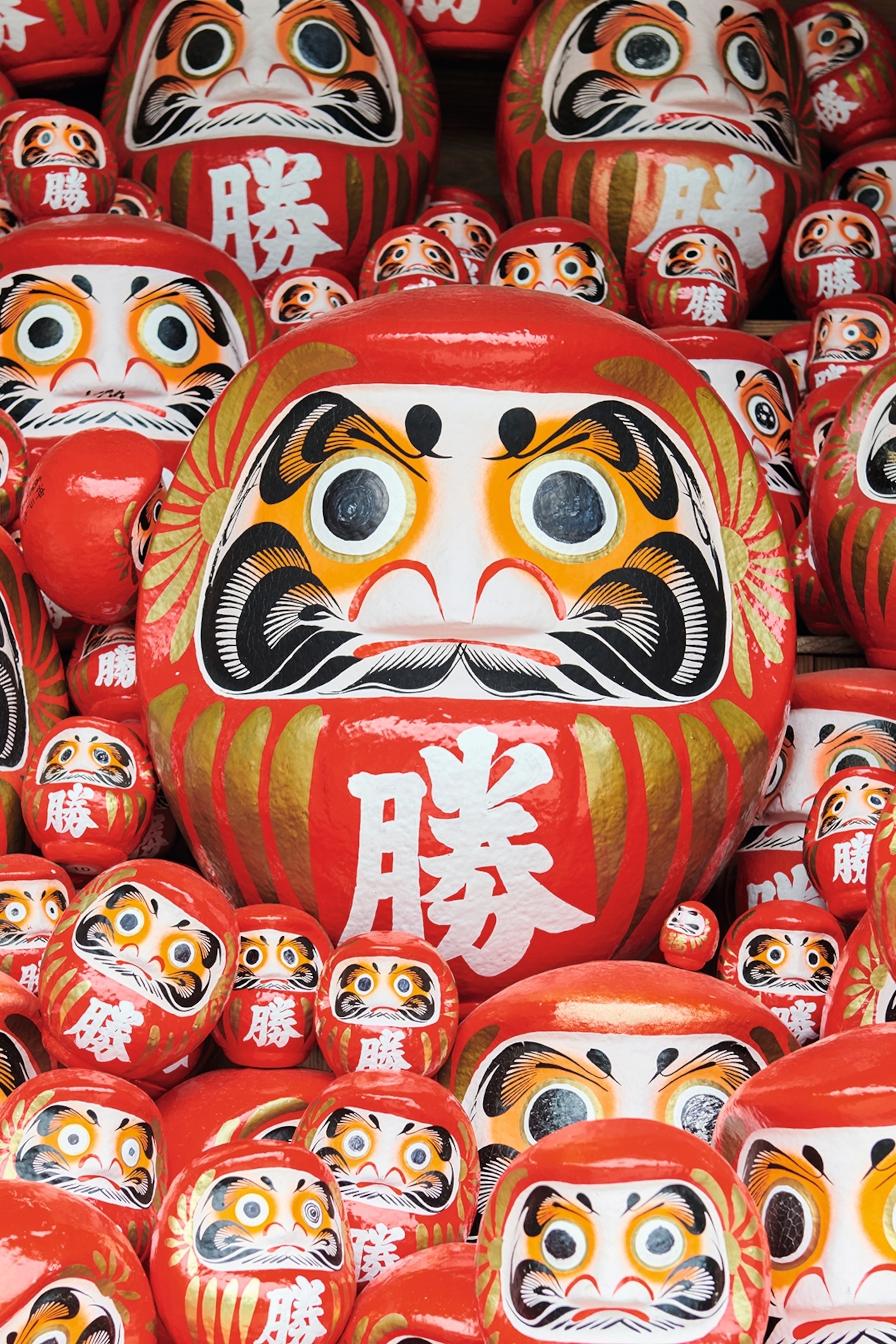 Daruma Dolls at Katsuoji Temple
Daruma Dolls at Katsuoji Temple
3. Kyoto City: A Culinary Journey Through Traditional Cuisine
Kyoto, Japan’s former capital for a millennium, remains the heart of traditional Japanese gastronomy. Experience the city’s distinctive cuisine at Manshige Kyoto-style Cuisine, operating since 1937.
3.1 Manshige Kyoto-style Cuisine: A Culinary Legacy
This traditional restaurant features beautifully designed rooms with tatami floors. Now guided by a third-generation master chef, Manshige offers culinary treasures like the signature simmered sea bream, once beloved by textile industry tycoons.
3.2 Kaiseki Banquet: An Exquisite Culinary Art Form
Embark on a kaiseki banquet, an elaborate multi-course meal featuring small, intricate dishes showcasing seasonal ingredients and culinary artistry. According to a 2018 Kyoto City Tourism Survey, tourists rank kaiseki dining as one of their top experiences in Kyoto, demonstrating the cuisine’s cultural significance.
 Kaiseki Banquet at Manshige Kyoto-style Cuisine
Kaiseki Banquet at Manshige Kyoto-style Cuisine
4. Nara Prefecture: Hiking Through the Serene Soni Highlands
Escape to Soni, one of Japan’s most beautiful rural villages, nestled between Osaka and Nagoya. This picturesque destination offers scenic mountain trails and renowned pampas grass.
4.1 Soni Highland: A Natural Sanctuary
Explore the expansive Soni Highland, a sweeping plateau covering 99 acres at the base of Mt. Kuroso. In ages past, pampas grass was used to thatch nearby rooftops. This region is also the birthplace of urushi, a natural lacquer integral to Japanese crafts, with traditions dating back to the Heian period (795-1185).
4.2 Guided Tours and Relaxation
Expert guides offer tours, sharing local folklore and insights into conservation efforts. Relax at Okame-no-yu, a highland onsen (hot spring), for a rejuvenating experience. According to the Nara Prefecture Tourism Bureau, Soni Highland’s onsen tourism contributes significantly to the region’s economy, attracting visitors seeking relaxation and natural beauty.
 Soni Highland Pampas Grass
Soni Highland Pampas Grass
5. Wakayama Prefecture: Witnessing the Bluefin Tuna
Sample fresh bluefin tuna, a prized ingredient in sushi and sashimi. Head to Kushimoto, at the farthest end of the Kii Peninsula, where Pacific bluefin tuna were successfully fully farmed.
5.1 Kushimoto: A Tuna Farming Pioneer
Bluefin tuna can be as precious as gold in Japan. In 2019, a single fish sold for £2.36 million. Feed the bluefin tuna, weighing between 10kg and 40kg each, and head south to the Shionomisaki Lighthouse, located on Cape Shionomisaki. Its blinking light stands sentinel at the southernmost point of Japan’s main island, Honshu. A 2021 report by the Wakayama Fisheries Research Institute highlights the economic impact of tuna farming, emphasizing its role in sustainable seafood production.
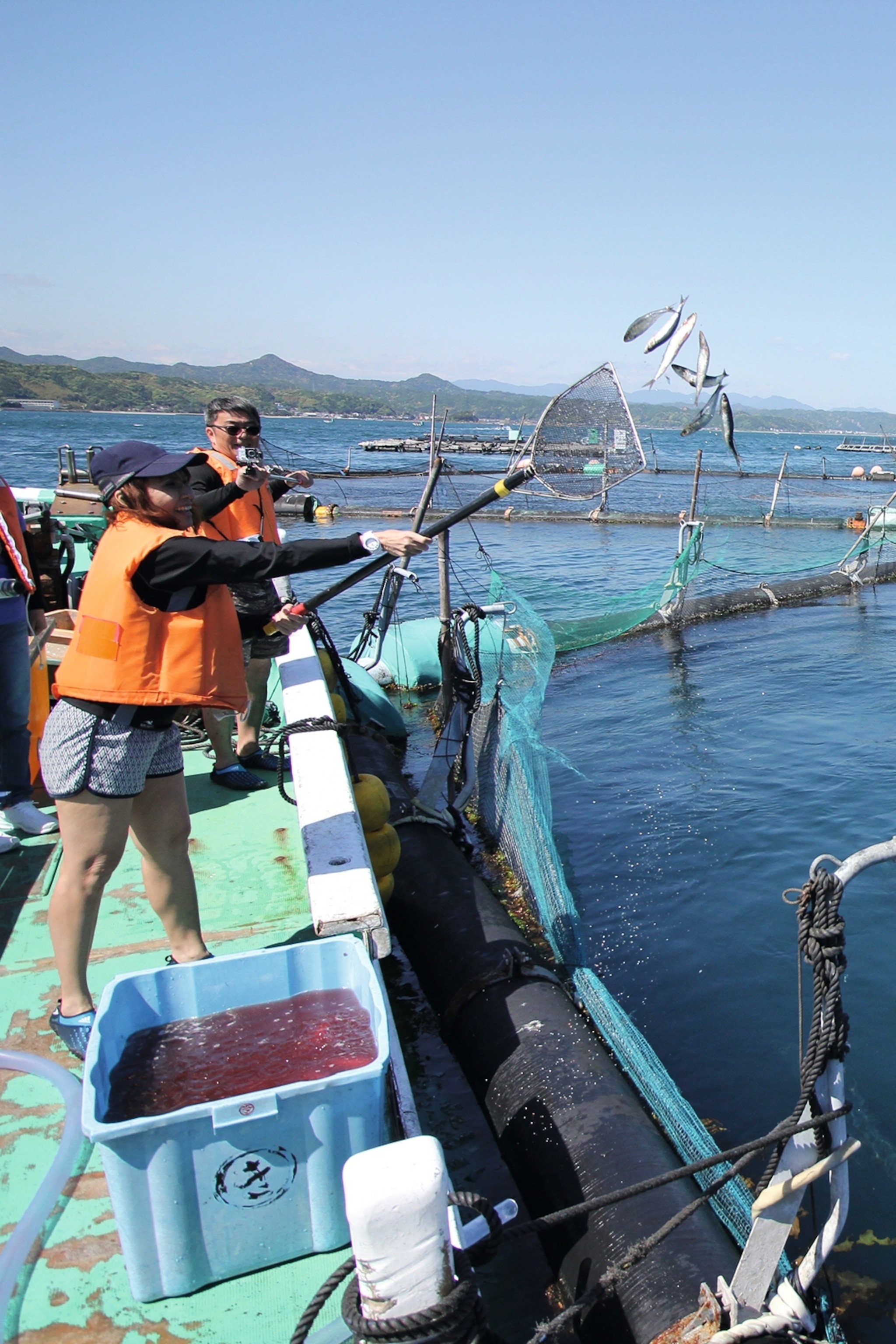 Fishing for Tuna in Kushimoto
Fishing for Tuna in Kushimoto
6. Kyoto Prefecture: Unveiling the Art of Tango Chirimen Silk
Discover Tango Chirimen, an elegant silk crêpe woven for around three centuries on the Tango Peninsula, a thumb of land jutting into the sea. The rhythmic drumming of looms is a rare disturbance to the serenity of this rustic nook.
6.1 Tango Chirimen: A Fabric of Tradition
Around 70% of the fabric used for kimonos comes from Tango. The material is prized for its finely textured surface and dye-ability. Tour the Tayuh factory in Kyotango, in business for almost a century, and witness the diligent work of master craftspeople.
6.2 A Legacy in Silk Weaving
The silk weaves its way to all corners of Japan. According to the Kyoto Prefectural Government’s 2019 report on traditional crafts, Tango Chirimen represents a significant part of the region’s cultural heritage and economic stability.
 Silk Weaving on the Tango Peninsula
Silk Weaving on the Tango Peninsula
7. Shiga Prefecture: Kayaking to a Torii Gate on Lake Biwa
Immerse yourself in Japan’s spiritual life at Lake Biwa, the country’s largest lake. The holy peak of Mount Hiei watches over this shimmering body of water.
7.1 Mount Hiei: The Mother Mountain of Japanese Buddhism
Mount Hiei is known as the “mother mountain of Japanese Buddhism,” where many high-ranking monks have trained. Monks still visit Mount Hiei to take part in a gruelling 1,000-day pilgrimage, known as kaihogyo.
7.2 Shirahige Shrine: A Spiritual Gateway
Kayak up to a vermilion-colored Torii gate at Shirahige Shrine on Lake Biwa’s western shore. A Torii gate symbolizes a threshold between the material and divine worlds. The Biwako Visitors Bureau states that Shirahige Shrine is a popular spiritual destination, blending natural beauty with religious significance.
 Torii Gate at Shirahige Shrine, Lake Biwa
Torii Gate at Shirahige Shrine, Lake Biwa
8. Tokushima Prefecture: Embarking on the Shikoku Pilgrimage
Join the historic Shikoku Pilgrimage, a 745-mile route passing 88 temples, taking six weeks or more to complete, and welcoming 100,000 participants annually. The pilgrimage route traces the coast of the island of Shikoku.
8.1 The Path of Kobo Daishi
The route follows in the footsteps of Kobo Daishi, the 8th-century monk who spent time here. The henro, pilgrims adorned in traditional attire, feature a straw hat, white garments symbolizing purity, and a kongozue staff representing the companionship of Kobo Daishi. According to Shikoku Pilgrimage research, this pilgrimage significantly supports local economies and preserves traditional culture.
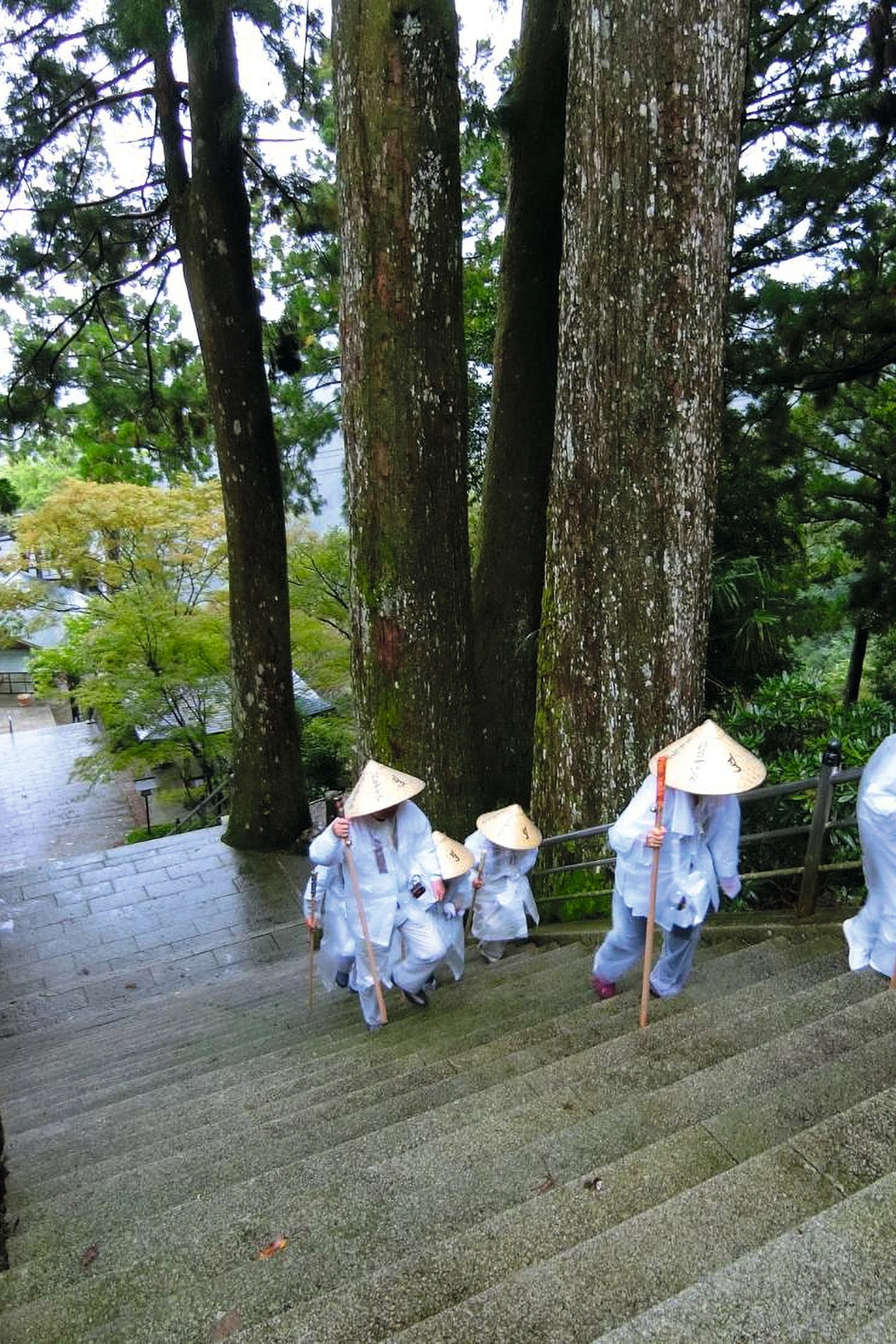 Pilgrims on the Shikoku Pilgrimage
Pilgrims on the Shikoku Pilgrimage
9. Fukui Prefecture: Sailing to the Sotomo Arch
Discover a coastline of hidden bays and rock formations in Fukui Prefecture. The Sotomo Arch, a natural bridge hewn from granite cliffs by wave action, is particularly spectacular.
9.1 Sotomo Arch: A Natural Wonder
After a local seafood lunch at Kaikoen restaurant in Obama City, book a boat tour departing from Wakasa Fisherman’s Wharf. Track the steep shores of the Uchitomi Peninsula, learning about the area’s history before reaching the rocks, battered by swells from the Sea of Japan.
9.2 A Coastal Paradise
The arch is part of a beautiful four-mile stretch of rugged cliffs and dramatic cave entrances. The Fukui Tourism Association emphasizes that Sotomo Arch is a key attraction, drawing visitors to experience the prefecture’s unique coastal beauty.
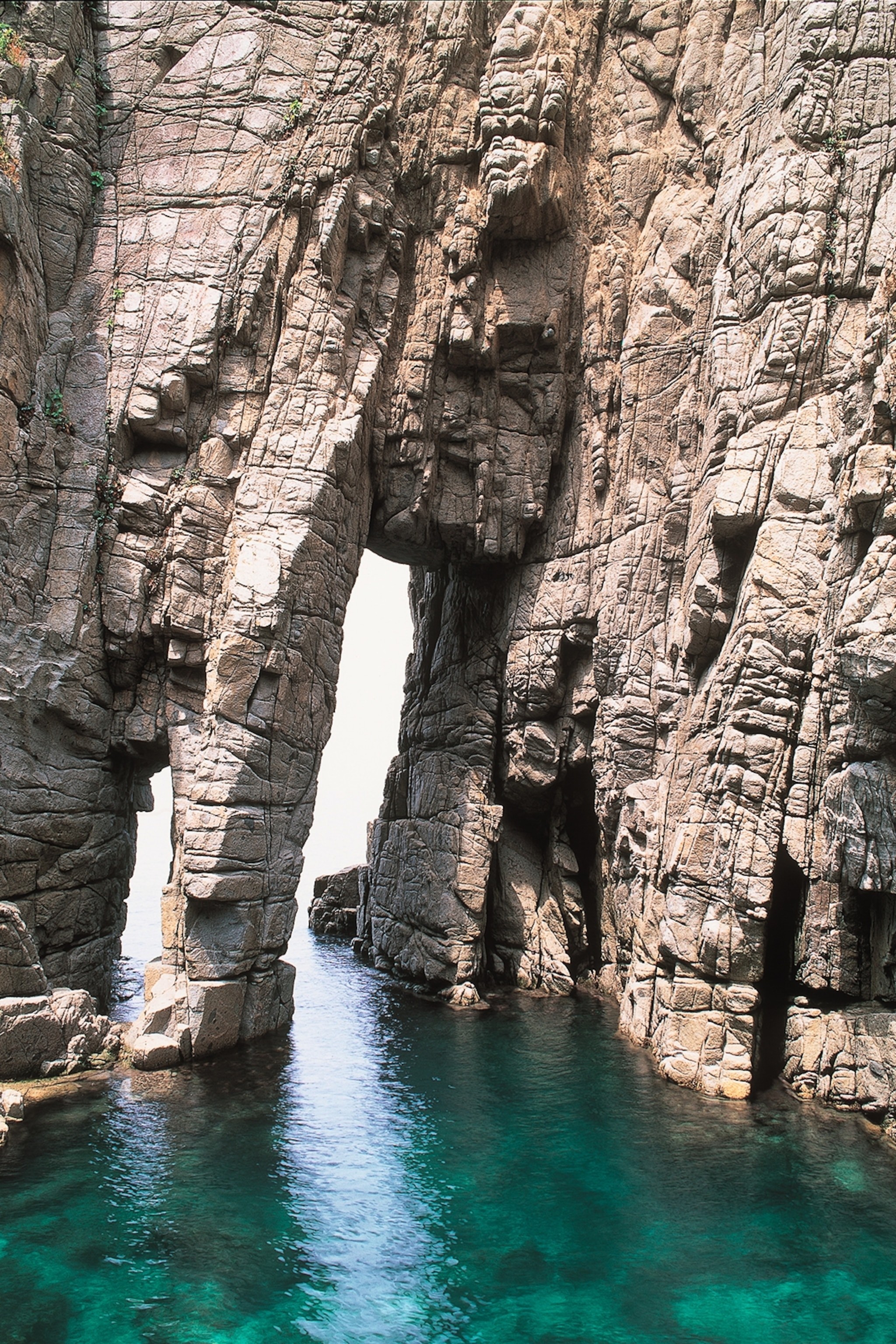 Sotomo Arch in Fukui Prefecture
Sotomo Arch in Fukui Prefecture
10. Osaka City: Experiencing Classical Noh Theatre
Attend a classical Noh theatre performance, an art form that has captivated audiences in Kansai since the Middle Ages. The show features actors in elaborate costumes, accompanied by the music of four instruments.
10.1 Ohtsuki Noh Theatre: A Cultural Gem
Ohtsuki Noh Theatre is one of the few of its kind in the Kansai region to have escaped destruction during the Second World War. Inside, find an all-cypress wooden stage, fringed by a perimeter of white pebbles.
10.2 An Ancient Art Form
The theatre holds regular productions and beginner’s workshops for those wishing to be initiated into this ancient art form. According to Osaka Convention & Tourism Bureau data, Ohtsuki Noh Theatre contributes significantly to preserving and promoting traditional Japanese performing arts.
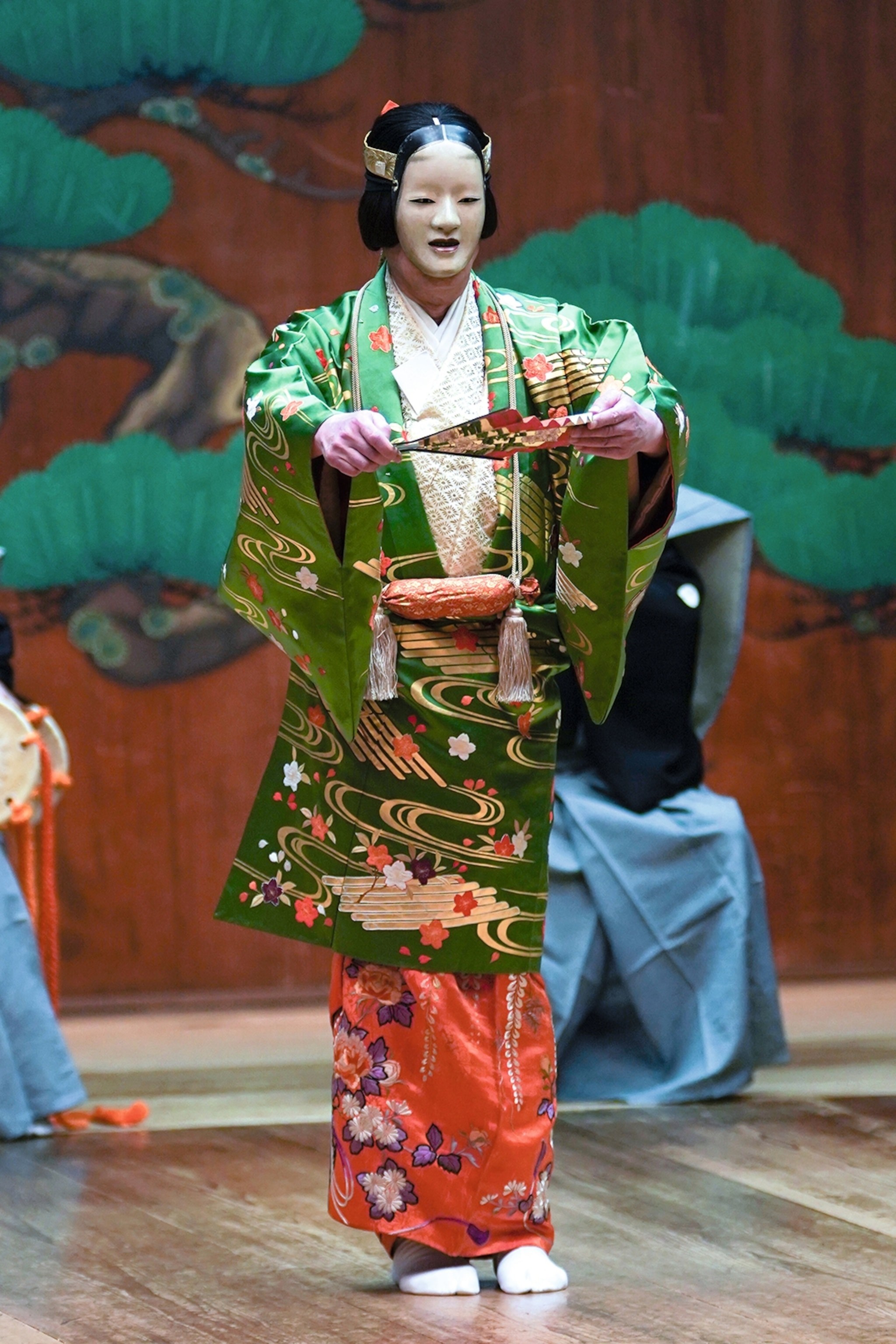 Noh Theatre Performance in Osaka City
Noh Theatre Performance in Osaka City
11. Hyogo Prefecture: Touring Tamba Beanfields
Explore the fertile basin of Tamba-Sasayama, where patchwork fields straddle the banks of a rushing river. This area is the heartland of Tamba ‘black soybean’ cultivation.
11.1 Tamba Black Soybeans: A Culinary Symbol
This bean variety is prized for its delicate taste, becoming particularly prominent around New Year when it symbolizes good health. Take a guided tour to learn about the growing, harvesting, and shipping process.
11.2 Village Exploration
Explore Tamba’s quaint villages, visit local communities, and hike in the nearby countryside. During the December harvest season, see roads alive with bean fans keen to secure some of the crop. Hyogo Prefecture’s agricultural department highlights the Tamba region as a key producer of specialty crops, boosting local tourism.
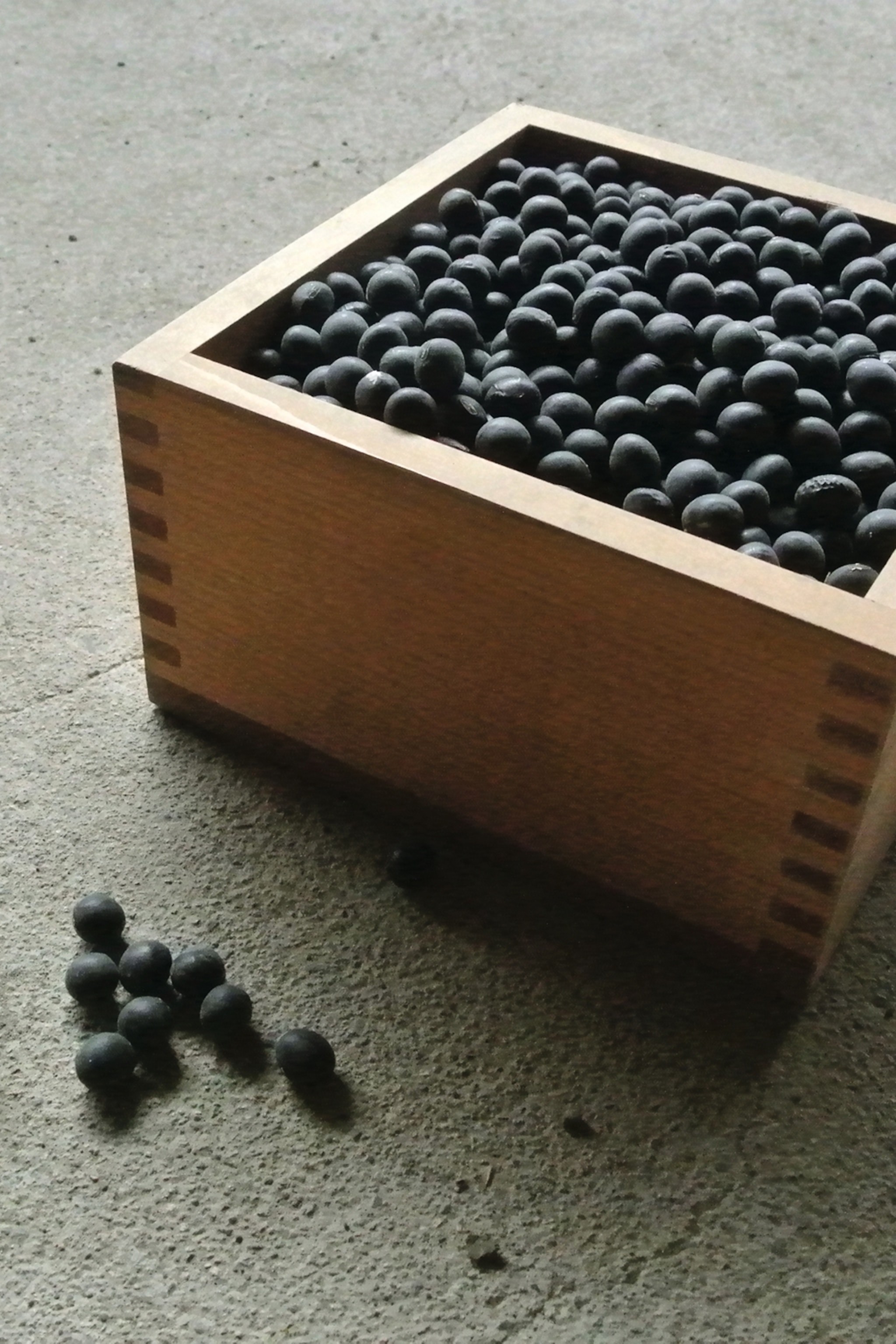 Tamba Beanfields in Hyogo Prefecture
Tamba Beanfields in Hyogo Prefecture
12. Kobe City: Indulging in Famous Sake
Sample excellent sake in Kobe City. The Nada district possesses the ingredients for producing rice wine: calcium- and potassium-rich spring water, rice paddies, and proximity to Kobe port.
12.1 The Nada District: Sake Brewing Excellence
Learn about sake on a guided tour of the Nada district, stretching for almost two miles. Visit sake breweries to taste different labels and museums to learn about the history of sake production.
12.2 Sawanotsuru Museum: A Sake Legacy
The Sawanotsuru Museum preserves traditional methods. According to the Kobe Tourism Bureau, sake tourism in Nada contributes significantly to the city’s cultural and economic landscape.
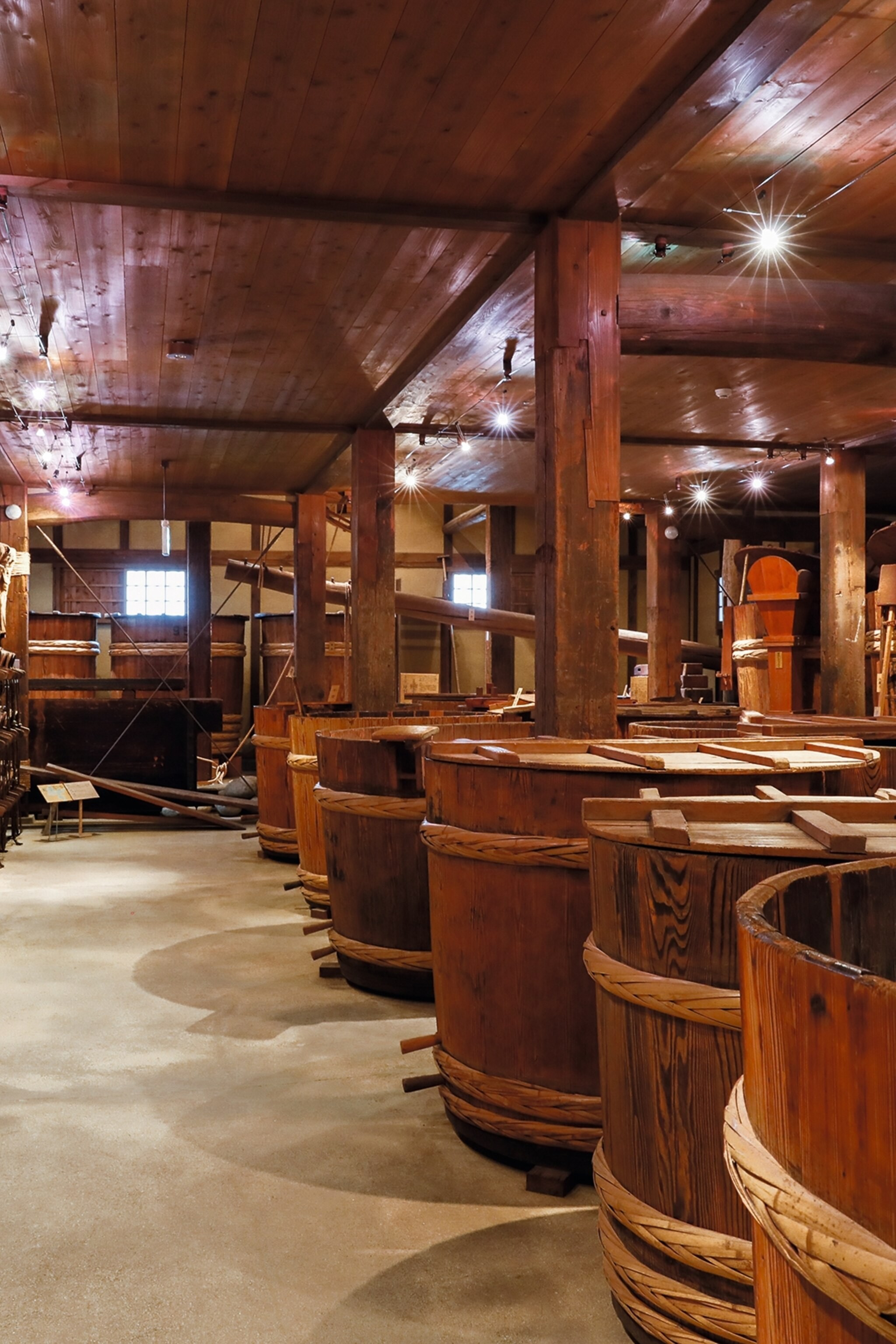 Sawanotsuru Sake Museum in Kobe
Sawanotsuru Sake Museum in Kobe
13. Sakai City: Mastering the Ancient Art of Shakyo
Practice shakyo, the art of hand-copying the sutras. This practice thrived during the 8th century as Buddhism began to take root in Japan.
13.1 Myohoji Temple: A Sanctuary of Calligraphy
Some temples now offer shakyo classes for visitors. Experience a sense of mindfulness as you trace the contours of Japanese letters and develop intense focus. One of the best places to try shakyo is Myohoji, a temple in the port town of Sakai City. Students can put calligraphy brush to paper and turn over a new leaf in this peaceful sanctuary. According to Sakai City’s cultural promotion division, shakyo classes draw tourists interested in traditional Japanese arts and meditation.
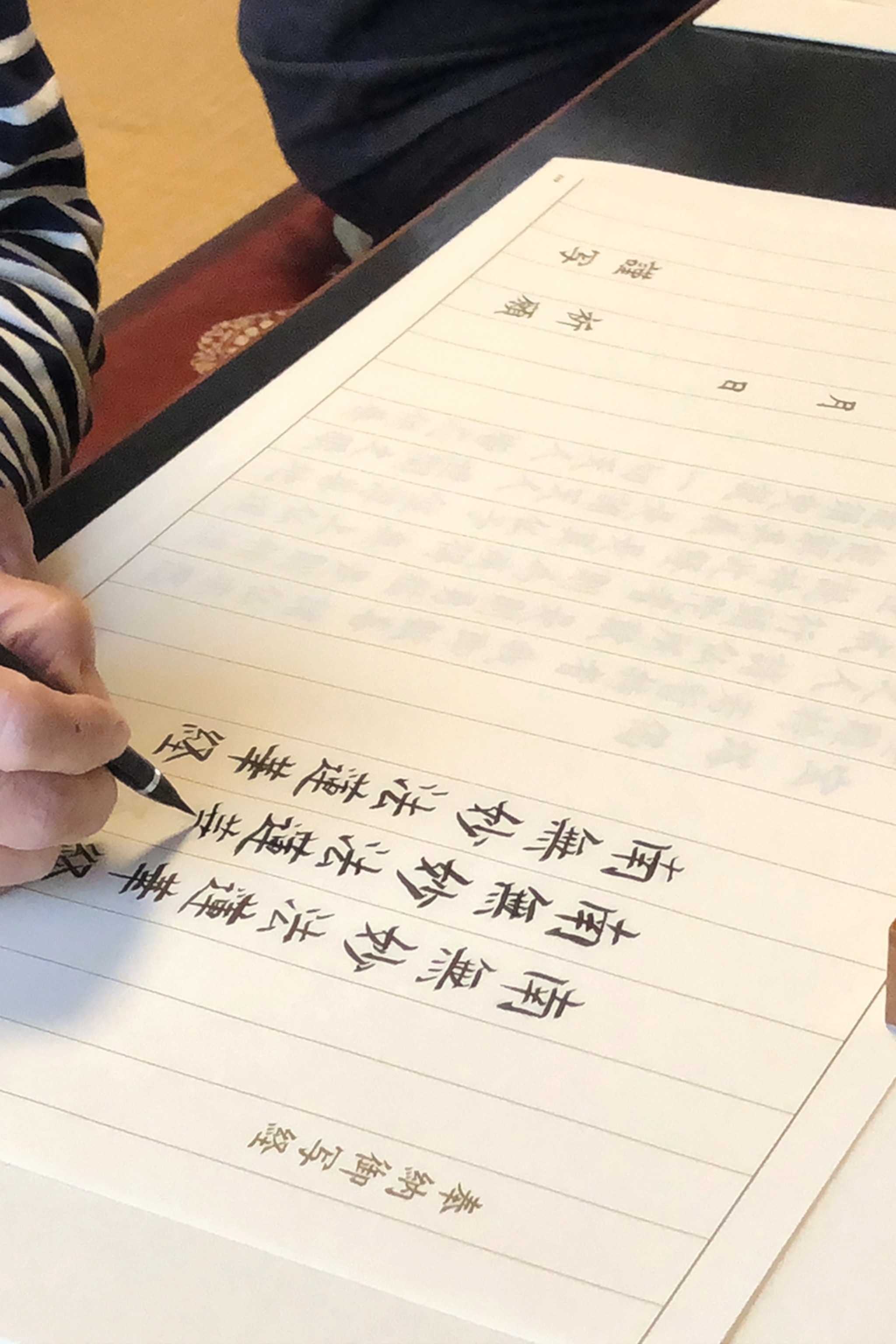 Shakyo in Sakai City
Shakyo in Sakai City
14. Tottori Prefecture: Exploring Historic Harbours
Explore Tottori, the least populous of Japan’s 47 prefectures, home to the 1,729m mass of Daisen, a mountain that rises from the shore.
14.1 Sakaiminato: A Fishing Epicenter
Daisen can be seen from Sakaiminato, a historic port city on a sandbar at the northwestern end of Tottori Prefecture. Sakaiminato is the epicenter of the fishing industry in western Japan, boasting one of the largest catches of tuna and red snow crab in Japan, as well as horse mackerel.
14.2 Fishing Industry Exploration
Explore its quays on an organized tour, observing the freshly caught fish being processed and the wholesale market where they are sold. Tottori Prefecture’s tourism statistics highlight Sakaiminato as a key destination for seafood lovers and those interested in Japan’s fishing industry.
 Sakai Fishing Port in Sakaiminato
Sakai Fishing Port in Sakaiminato
FAQ about Kansai Tourism
1. What is Kansai famous for?
Kansai is renowned for its rich history, cultural heritage, and culinary delights. Key attractions include ancient temples, traditional cuisine, scenic landscapes, and unique experiences like dining with ama divers.
2. What are the best times to visit Kansai?
Spring (March-May) and autumn (September-November) are the best times to visit Kansai, offering pleasant weather and stunning seasonal scenery, such as cherry blossoms in spring and colorful foliage in autumn.
3. How can SIXT.VN help me plan my trip to Kansai?
SIXT.VN provides a range of services including airport transfers, hotel bookings, guided tours, and transportation options, ensuring a convenient and enjoyable travel experience.
4. What kind of cultural experiences can I have in Kansai?
Kansai offers various cultural experiences, including attending Noh theatre performances, participating in shakyo (sutra copying), visiting historic temples and shrines, and exploring traditional crafts like Tango Chirimen silk weaving.
5. Are there any natural attractions in Kansai?
Yes, Kansai boasts numerous natural attractions, such as Lake Biwa, Soni Highland, Sotomo Arch, and the coastlines of Wakayama and Fukui prefectures.
6. What are the must-try foods in Kansai?
Must-try foods in Kansai include kaiseki cuisine in Kyoto, fresh bluefin tuna in Wakayama, Tamba black soybeans in Hyogo, and sake in Kobe.
7. How can I get around in Kansai?
Kansai offers excellent rail options for convenient travel between cities and prefectures. SIXT.VN can also arrange private transportation and airport transfers.
8. Is Kansai suitable for family travel?
Yes, Kansai offers attractions suitable for families, including temples, natural parks, cultural experiences, and family-friendly accommodations.
9. What are some unique activities to do in Kansai?
Unique activities include dining with ama divers in Mie Prefecture, kayaking to a Torii gate on Lake Biwa, and participating in the Shikoku Pilgrimage in Tokushima.
10. Where can I find reliable travel information about Kansai?
Reliable travel information can be found on official tourism websites such as the Kansai Tourism Bureau, as well as reputable travel sites like TripAdvisor and Booking.com.
SIXT.VN: Your Gateway to Kansai Tourism
Planning a trip to Kansai can be overwhelming, but SIXT.VN simplifies the process. We understand the challenges travelers face: complex itineraries, language barriers, and finding reliable services. That’s why we offer comprehensive travel solutions to make your Kansai adventure seamless and unforgettable.
SIXT.VN provides:
- Personalized Itinerary Planning: We tailor your itinerary to match your interests and schedule.
- Reliable Airport Transfers: Start your trip stress-free with our dependable airport transfer services.
- Curated Hotel Bookings: Choose from a wide range of accommodations to fit your budget and preferences.
- Expert Guided Tours: Discover hidden gems and cultural highlights with our knowledgeable guides.
- Convenient Transportation Options: Navigate Kansai with ease using our rental car and transportation services.
Ready to explore the wonders of Kansai? Contact SIXT.VN today and let us create your dream trip.
Address: 260 Cau Giay, Hanoi, Vietnam
Hotline/Whatsapp: +84 986 244 358
Website: SIXT.VN
Don’t wait – your Kansai adventure awaits.



